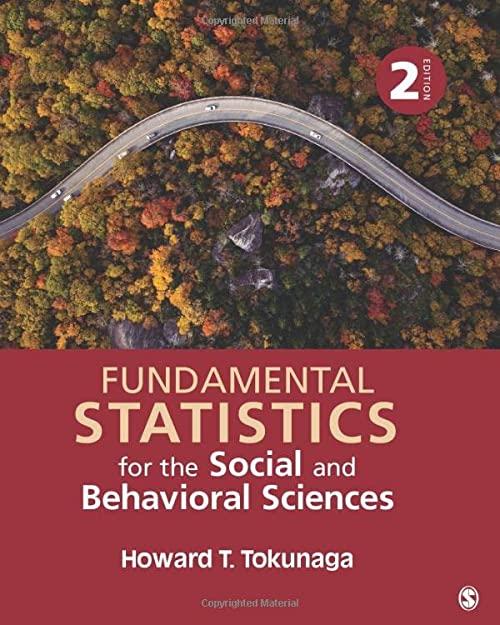A pair of researchers was interested in studying men's preferences for a potential mate and how these
Question:
A pair of researchers was interested in studying men's preferences for a potential mate and how these preferences may change as men get older (Alterovitz \& Mendelsohn, 2009). The researchers believed that men prefer women who are younger than themselves; furthermore, they hypothesized that the preferred difference in age is greater for older men than for younger men. As part of a larger study, they examined personal advertisements placed by men who were either 20 to 34 years old or 40 to 54 years old; in looking at these ads, the researchers calculated the difference between the man's age and the man's preferred age of a potential partner. The descriptive statistics for the difference in age variable for the two age groups are as follows:
20 to 34 years old: \(N_{1}=25, \bar{X}_{1}=1.04, s_{1}=2.72\)
40 to 54 years old: \(N_{1}=25, \bar{X}_{1}=4.98, s_{1}=3.80\)
a. State the null and alternative hypotheses \(\left(\mathrm{H}_{0}\right.\) and \(\left.\mathrm{H}_{1}\right)\).
b. Make a decision about the null hypothesis.
(1) Calculate the degrees of freedom \((d f)\).
(2) Set alpha ( \(\alpha\) ), identify the critical values (draw the distribution), and state a decision rule.
(3) Calculate a value for the \(t\)-test for independent means.
(4) Make a decision whether to reject the null hypothesis.
(5) Determine the level of significance.
c. Draw a conclusion from the analysis.
d. Relate the result of the analysis to the research hypothesis.
Step by Step Answer:

Fundamental Statistics For The Social And Behavioral Sciences
ISBN: 9781506377476
2nd Edition
Authors: Howard T Tokunaga




